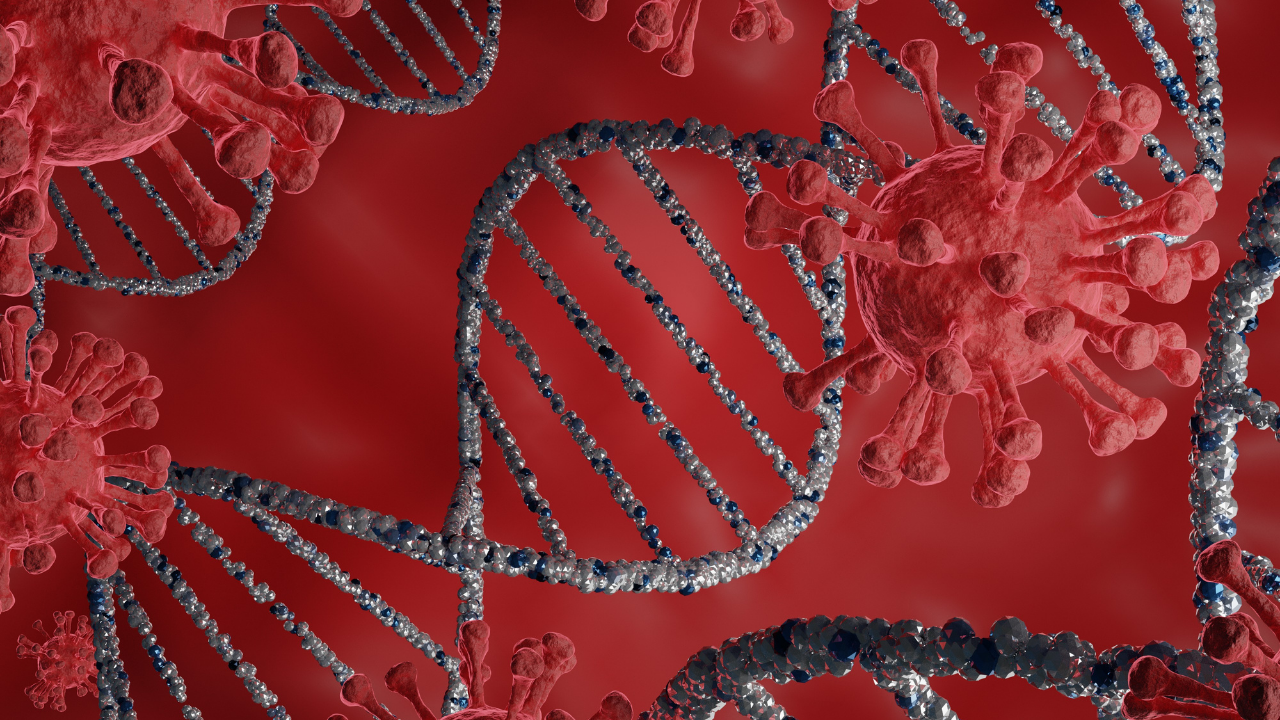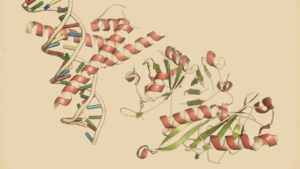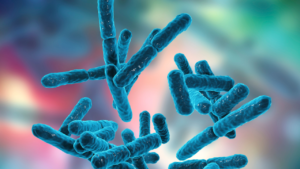Metabolites and Microbes: Navigating the Gut-Heart Axis
Explore the gut-heart axis – intricate relationship between gut microbiota, metabolites, and heart health in this informative blog post.

Key Points
- Gut-Heart Interaction: The article underscores the growing significance of the interaction between the gut microbiota (GM) and the heart in recent research, highlighting its pivotal role in cardiovascular diseases (CVDs).
- Microbial Metabolites: It emphasizes the impact of bacterial metabolites, such as TMAO, on cardiovascular pathologies, demonstrating how these microbial byproducts can exacerbate CVDs and influence disease development.
- Metabolic Modulation: The article discusses how various microorganisms in the gut modulate metabolic reactions, producing essential substances like bile acids and short-chain fatty acids that are crucial for host health and influence disease risk.
- Dietary and Environmental Influences: It sheds light on how dietary and environmental changes can significantly affect the composition and diversity of the GM, potentially influencing health risks and the development of CVDs.
- Clinical Implications: The article concludes by highlighting the gut-heart axis as a promising target for the prevention and treatment of a range of cardiovascular disorders, including hypertension, atherosclerosis, cardiomyopathy, and heart failure, offering potential clinical avenues for improving cardiovascular health.
Introduction
In recent years, the complex relationship between the gut and the heart, known as the "Gut-Heart Axis," has emerged as a focal point of cardiovascular research.
This axis serves as a critical communication bridge between the gut microbiota (GM) – a diverse community of microorganisms residing in the gastrointestinal tract – and the heart, a central organ essential for overall health.
One intriguing facet of this intricate connection revolves around microbial metabolites.
Within the gut, a dynamic ecosystem, various microbes metabolize and ferment dietary components, yielding a diverse array of metabolites.
These compounds, once absorbed into the bloodstream, have been revealed to exert profound effects on cardiovascular health and disease.
Among these metabolites, trimethylamine N-oxide (TMAO) has gained notoriety.
Produced by specific gut bacteria from dietary precursors, TMAO has demonstrated its potency as a mediator of cardiovascular pathologies.
Elevated TMAO levels in the blood have been linked to increased cardiovascular risk, setting in motion a chain of events that can culminate in heart diseases like atherosclerosis, hypertension, and heart failure.

This article navigates the intricate interplay between microbial metabolites and the cardiovascular system within the Gut-Heart Axis.
We explore the production, circulation, and impact of these metabolites, uncovering the mechanisms through which they influence the host's metabolic profile and contribute to cardiovascular disease development.
Additionally, we investigate how dietary and environmental factors can disrupt the delicate equilibrium of the gut microbiota, potentially altering microbial composition and metabolite production, with profound implications for cardiovascular health.
As we embark on this exploration of the Gut-Heart Axis, we illuminate the compelling role of microbial metabolites in cardiovascular health, highlighting their potential as both disease risk markers and targets for therapeutic strategies.
This journey will shed light on the intricate connections that underlie the relationship between the gut and the heart, offering valuable insights into novel avenues for improving cardiovascular well-being.
Gut-Heart Axis: Key to Cardiovascular Health
Recent research has spotlighted the vital connection between the gut microbiome (GM) and heart health. A Trusted Source Forkosh, E.; Ilan, Y. The heart-gut axis: New target for atherosclerosis and congestive heart failure therapy. Open Heart 2019, 6, e000993. [Google Scholar] A Trusted Source Trøseid, M.; Andersen, G.Ø.; Broch, K.; Hov, J.R. The gut microbiome in coronary artery disease and heart failure: Current knowledge and future directions. EBioMedicine 2020, 52, 102649. [Google Scholar]The GM engages in a complex, two-way dialogue with the heart through bacterial byproducts from digested foods that enter the bloodstream.
Some of these substances, like trimethylamine N-oxide (TMAO), can worsen heart conditions. A Trusted Source Bartolomaeus, H.; McParland, V.; Wilck, N. Darm-Herz-Achse: Wie Darmbakterien kardiovaskuläre Erkrankungen beeinflussen [Gut-heart axis: How gut bacteria influence cardiovascular diseases]. Herz 2020, 45, 134–141. [Google Scholar]Microbes in the gut also influence metabolic processes by producing bile acids, choline, and short-chain fatty acids, impacting our overall health and disease risk.
Dietary shifts and environmental factors can alter the GM composition, affecting our well-being. A Trusted Source Conlon, M.A.; Bird, A.R. The impact of diet and lifestyle on gut microbiota and human health. Nutrients 2014, 7, 17–44. [Google Scholar] [PubMed] Understanding this gut-heart link could revolutionize cardiovascular disease prevention and treatment. A Trusted Source Xu, H.; Wang, X.; Feng, W.; Liu, Q.; Zhou, S.; Liu, Q.; Cai, L. The gut microbiota and its interactions with cardiovascular disease. Microb. Biotechnol. 2020, 13, 637–656. [Google Scholar] [PubMed]How Your Gut Microbes Impact Heart Health
Our gut microbiome, a bustling community of microorganisms living in our intestines, wields a profound influence on our cardiovascular health.
This intricate relationship between the gut and the heart is known as the gut-heart axis, and it's a pivotal player in understanding heart diseases. A Trusted Source Wang, L.; Wang, S.; Zhang, Q.; He, C.; Fu, C.; Wei, Q. The role of the gut microbiota in health and cardiovascular diseases. Mol. Biomed. 2022, 3, 30. [Google Scholar]Gut dysbiosis, an imbalance in the gut microbiome, can undermine cardiac function and escalate the risk of conditions like cardiomyopathy and cardiac insufficiency.
These conditions are potent indicators of looming cardiovascular diseases (CVDs) and associated complications.
A host of factors is at play when gut dysbiosis accelerates cardiovascular troubles.
These include the gut microbiome's composition, the permeability of the intestinal barrier, the production of gut-derived substances (like metabolites, toxins, and peptides), the immune system, and the various cellular components of the cardiovascular system. A Trusted Source Cheng, C.K.; Huang, Y. The gut-cardiovascular connection: New era for cardiovascular therapy. Med. Rev. 2021, 1, 23–46. [Google Scholar]Dysbiosis-induced shifts in gut microbiota can lead to alterations in the production of vital molecules and immune responses.
This can stress the heart and blood vessels, elevating the likelihood of CVDs.
But it doesn't stop there; the gut microbiome can also disrupt other systems connected to heart health, like the liver and brain, while risk factors for heart diseases such as obesity, type 2 diabetes, and insulin resistance can further upset the gut microbiome.
One plausible mechanism through which gut dysbiosis contributes to CVDs involves increased intestinal permeability and inflammation.
This is mediated by specific signaling pathways, including the LPS/TLR4 and NLRP3 pathways. A Trusted Source Mu, Q.; Kirby, J.; Reilly, C.M.; Luo, X.M. Leaky gut as a danger signal for autoimmune diseases. Front. Immunol. 2017, 8, 598. [Google Scholar]In a nutshell, understanding the intricate relationship between our gut microbes and heart health is essential for safeguarding our cardiovascular well-being.
Gut dysbiosis can set off a chain of events that increase the risk of heart diseases, making it crucial to nurture a balanced gut microbiome for a healthier heart.
LEARN MORE:
The 4 Key Insights into the Gut-Lung Axis
Unrolling the Gut-Liver Axis: Dysbiosis’s Role in Liver Diseases
13 Best Probiotics for Men – Garden of Life
20 Best Probiotics for Kids: Science-Backed Inside
Secrets of Gut Health in Hypertension
Hypertension, a major global health concern, is intricately tied to both genetics and dietary choices. A Trusted Source Cheng, C.K.; Huang, Y. The gut-cardiovascular connection: New era for cardiovascular therapy. Med. Rev. 2021, 1, 23–46. [Google Scholar] Emerging research has unveiled a fascinating connection between hypertension and the gut microbiome (GM). A Trusted Source Wang, L.; Wang, S.; Zhang, Q.; He, C.; Fu, C.; Wei, Q. The role of the gut microbiota in health and cardiovascular diseases. Mol. Biomed. 2022, 3, 30. [Google Scholar] Hypertensive individuals show remarkable GM alterations, including decreased diversity, shifts in composition, and a decline in beneficial bacteria. A Trusted Source Sun, S.; Lulla, A.; Sioda, M.; Winglee, K.; Wu, M.C.; Jacobs Jr, D.R.; Shikany, J.M.; Lloyd-Jones, D.M.; Launer, L.J.; Fodor, A.A. Gut microbiota composition and blood pressure: The CARDIA study. Hypertension 2019, 73, 998–1006. [Google Scholar] A Trusted Source Li, J.; Zhao, F.; Wang, Y.; Chen, J.; Tao, J.; Tian, G.; Wu, S.; Liu, W.; Cui, Q.; Geng, B. Gut microbiota dysbiosis contributes to the development of hypertension. Microbiome 2017, 5, 14. [Google Scholar]
However, the road to understanding these intricate connections requires further exploration.
At the core of this research is the understanding that high salt intake is linked to elevated blood pressure. A Trusted Source Varela-Trinidad, G.U.; Domínguez-Díaz, C.; Solórzano-Castanedo, K.; Íñiguez-Gutiérrez, L.; Hernández-Flores, T.d.J.; Fafutis-Morris, M. Probiotics: Protecting our health from the gut. Microorganisms 2022, 10, 1428. [Google Scholar]Conversely, adopting a low-sodium diet not only reduces blood pressure but also lowers the risk of cardiovascular disease.
Key findings indicate a shift in the GM profile of hypertensive individuals, with a reduction in health-promoting bacteria such as Faecalibacterium, Bacteroides, Roseburia, Bifidobacterium, Coprococcus, and Butyrivibrio, while bacteria like Veillonella, Prevotella, and Klebsiella are elevated. A Trusted Source Sun, S.; Lulla, A.; Sioda, M.; Winglee, K.; Wu, M.C.; Jacobs Jr, D.R.; Shikany, J.M.; Lloyd-Jones, D.M.; Launer, L.J.; Fodor, A.A. Gut microbiota composition and blood pressure: The CARDIA study. Hypertension 2019, 73, 998–1006. [Google Scholar] A Trusted Source Li, J.; Zhao, F.; Wang, Y.; Chen, J.; Tao, J.; Tian, G.; Wu, S.; Liu, W.; Cui, Q.; Geng, B. Gut microbiota dysbiosis contributes to the development of hypertension. Microbiome 2017, 5, 14. [Google Scholar] This imbalance extends to microbial activity, affecting essential functions such as amino acid synthesis, fatty acid utilization, and saccharide transport. A Trusted Source Li, J.; Zhao, F.; Wang, Y.; Chen, J.; Tao, J.; Tian, G.; Wu, S.; Liu, W.; Cui, Q.; Geng, B. Gut microbiota dysbiosis contributes to the development of hypertension. Microbiome 2017, 5, 14. [Google Scholar] Recent research has taken this a step further, identifying specific microbial players associated with hypertension. A Trusted Source Kim, S.; Goel, R.; Kumar, A.; Qi, Y.; Lobaton, G.; Hosaka, K.; Mohammed, M.; Handberg, E.M.; Richards, E.M.; Pepine, C.J. Imbalance of gut microbiome and intestinal epithelial barrier dysfunction in patients with high blood pressure. Clin. Sci. 2018, 132, 701–718. [Google Scholar]In hypertensive individuals, Parabacteroides johnsonii, Eubacterium siraeum, and Alistipes finegoldii were found in higher abundance, while butyrate-producing Bacteroides thetaiotaomicron was less prevalent.
Additionally, 45 microbial genera were positively linked to blood pressure indexes, with 27 belonging to the Firmicutes group, while 19 Lactobacillus species exhibited negative associations. A Trusted Source Palmu, J.; Salosensaari, A.; Havulinna, A.S.; Cheng, S.; Inouye, M.; Jain, M.; Salido, R.A.; Sanders, K.; Brennan, C.; Humphrey, G.C. Association between the gut microbiota and blood pressure in a population cohort of 6953 individuals. J. Am. Heart Assoc. 2020, 9, e016641. [Google Scholar]HIGHLIGHT
Gut microbiome (GM) alterations, including reduced diversity and beneficial bacteria, are linked to hypertension. Lifestyle changes and diet targeting the GM show promise in managing hypertension
Atherosclerosis (AS): A Silent Threat to Your Heart
Atherosclerosis (AS), a chief driver of cardiovascular diseases (CVDs), silently wreaks havoc as the world's leading cause of death.
This chronic inflammatory disease is defined by the gradual buildup of fatty deposits and fibrous materials within arterial walls, thickening and hardening them over time. A Trusted Source Wang, L.; Wang, S.; Zhang, Q.; He, C.; Fu, C.; Wei, Q. The role of the gut microbiota in health and cardiovascular diseases. Mol. Biomed. 2022, 3, 30. [Google Scholar] While various factors like lifestyle, aging, and obesity contribute to AS risk, an intriguing commonality emerges in gut dysbiosis. A Trusted Source Yoo, J.; Sniffen, S.; McGill Percy, K.; Chari, B.; Chidipi, B. Gut Dysbiosis and Immune System in Atherosclerotic Cardiovascular Disease (ACVD). Microorganisms 2022, 10, 108. [Google Scholar] [CrossRef] [PubMed] So, how does your gut microbiota (GM) influence AS? A Trusted Source García-Ríos, A.; Garcia, A.C.; Perez-Jimenez, F.; Perez-Martinez, P. Gut microbiota: A new protagonist in the risk of cardiovascular disease? Clínica E Investig. En Arterioscler. Engl. Ed. 2019, 31, 178–185. [Google Scholar]- Nutritional Interplay: Your GM can produce compounds that impact inflammation and immune responses crucial in AS development. The food you consume plays a vital role here.
- SCFAs to the Rescue: Short-chain fatty acids (SCFAs), another GM product, exert influence. They have protective effects against AS.
- Lipid Metabolism Regulation: The GM also has a hand in regulating lipid metabolism, which, in turn, affects the development of AS via bile acid metabolism.
- Guarding the Barrier: A well-functioning GM maintains intestinal barrier integrity, preventing the absorption of pro-inflammatory substances, like LPS.
- Hormone Harmony: Your GM can even affect hormone metabolism.
Chryseomonas, along with Veillonella and Streptococcus, were consistently identified in these plaques, suggesting a potential role for GM in coronary artery disease.
Moreover, researchers observed differences in the intestinal microbiota of AS patients compared to those without AS.
A study analyzed stool samples from 218 AS patients and 187 healthy individuals, revealing deviations in the GM of AS patients, marked by an overabundance of Enterobacteriaceae and Streptococcus spp. A Trusted Source Jie, Z.; Huihua, X.; Zhong, S.-L.; Feng, Q.; Shenghui, L.; Liang, S.; Zhong, H.; Liu, Z.; Gao, Y.; Zhao, H.; et al. The gut microbiome in atherosclerotic cardiovascular disease. Nat. Commun. 2017, 8, 845. [Google Scholar] [CrossRef] Further metagenomic analysis showed increased Collinsella levels in AS patients, while healthy controls displayed enriched levels of protective butyrate-producing bacteria, Roseburia, and Eubacterium, highlighting a dysbiosis condition in AS patients. A Trusted Source Karlsson, F.; Fåk, F.; Nookaew, I.; Tremaroli, V.; Fagerberg, B.; Petranovic, D.; Bäckhed, F.; Nielsen, J. Symptomatic atherosclerosis is associated with an altered gut metagenome. Nat. Commun. 2012, 3, 1245. [Google Scholar] [CrossRef] [PubMed]These findings underscore certain gut bacteria as potential AS contributors, while others appear protective against atherosclerotic plaque formation.
However, the precise mechanisms linking these microorganisms to AS initiation remain a subject of ongoing investigation.
HIGHLIGHT
Your gut health may play a pivotal role in the development of atherosclerosis, the silent threat to your heart. Understanding these connections could open new avenues for preventing and managing cardiovascular diseases
Heart-Gut Axis: Gut Dysbiosis in Heart Failure
Heart failure (HF) stands as the terminal stage of several cardiovascular ailments, profoundly impacting the heart's structure and function. A Trusted Source Jia, Q.; Li, H.; Zhou, H.; Zhang, X.; Zhang, A.; Xie, Y.; Li, Y.; Lv, S.; Zhang, J. Role and Effective Therapeutic Target of Gut Microbiota in Heart Failure. Cardiovasc. Ther. 2019, 2019, 5164298. [Google Scholar] [CrossRef] A Trusted Source Jin, M.; Qian, Z.; Yin, J.; Xu, W.; Zhou, X. The role of intestinal microbiota in cardiovascular disease. J. Cell. Mol. Med. 2019, 23, 2343–2350. [Google Scholar] [CrossRef] Recent studies have shed light on an intriguing theory known as the "gut hypothesis of heart failure". A Trusted Source Nagatomo, Y.; Tang, W.H. Intersections between Microbiome and Heart Failure: Revisiting the Gut Hypothesis. J. Card. Fail. 2015, 21, 973–980. [Google Scholar] [CrossRef] [PubMed]This hypothesis suggests that reduced cardiac output and systemic circulation shifts can disrupt the intestinal mucosa, leading to increased gut permeability, bacterial translocation, and circulating endotoxins.
These factors contribute to the inflammation observed in HF patients.
Researchers have undertaken extensive efforts to decode the gut microbiota (GM) profile in HF, revealing compelling insights: A Trusted Source Gallo, A.; Macerola, N.; Favuzzi, A.; Nicolazzi, M.A.; Gasbarrini, A.; Montalto, M. The Gut in Heart Failure: Current Knowledge and Novel Frontiers. Med. Princ. Pract. 2022, 31, 203–214. [Google Scholar] [CrossRef]- Bacterial Overgrowth: The GM in HF patients often exhibits significant alterations, reflecting bacterial overgrowth.
- Pathogenic Phyla: A shift toward pathogenic phyla is observed, unsettling the balance.
- Decrease in Anti-Inflammatory Bacteria: Anti-inflammatory bacteria decrease in abundance.
Comparisons between HF patients and healthy individuals further underscore these disparities:
Pasini et al. investigated fecal samples, finding that HF patients hosted more pathogenic bacteria than their healthy counterparts. A Trusted Source Pasini, E.; Aquilani, R.; Testa, C.; Baiardi, P.; Angioletti, S.; Boschi, F.; Verri, M.; Dioguardi, F. Pathogenic Gut Flora in Patients With Chronic Heart Failure. JACC Heart Fail. 2015, 4, 220–227. [Google Scholar] [CrossRef] [PubMed] Another study identified reductions in specific bacterial families and genera in HF patients. A Trusted Source Luedde, M.; Winkler, T.; Heinsen, F.-A.; Rühlemann, M.; Spehlmann, M.; Bajrovic, A.; Lieb, W.; Franke, A.; Ott, S.; Frey, N. Heart failure is associated with depletion of core intestinal microbiota: The intestinal microbiome in heart failure. ESC Heart Fail. 2017, 4, 282–290. [Google Scholar] [CrossRef] Kamo et al. employed 16S ribosomal RNA gene sequencing, revealing diminished levels of beneficial bacteria responsible for short-chain fatty acid production. A Trusted Source Kamo, T.; Akazawa, H.; Suzuki, J.; Komuro, I. Novel Concept of a Heart-Gut Axis in the Pathophysiology of Heart Failure. Korean Circ. J. 2017, 47, 663–669. [Google Scholar] [CrossRef] Yuzefpolskaya et al. demonstrated a decline in gut diversity with worsening HF severity. A Trusted Source Yuzefpolskaya, M.; Bohn, B.; Nasiri, M.; Zuver, A.; Onat, D.D.; Royzman, E.; Nwokocha, J.; Mabasa, M.; Pinsino, A.; Brunjes, D.; et al. Gut microbiota, endotoxemia, inflammation, and oxidative stress in patients with heart failure, left ventricular assist device, and transplant. J. Heart Lung Transplant. 2020, 39, 880–890. [Google Scholar] [CrossRef] Zhang et al. reported GM alterations with varying degrees of chronic heart failure. A Trusted Source Zhang, Z.; Cai, B.; Sun, Y.; Deng, H.; Wang, H.; Qiao, Z. Alteration of the gut microbiota and metabolite phenylacetylglutamine in patients with severe chronic heart failure. Front. Cardiovasc. Med. 2023, 9, 1076806. [Google Scholar] [CrossRef] One consistent finding is the depletion of bacteria vital for short-chain fatty acid (SCFA) production, primarily within the Lachnospiraceae and Ruminococcaceae families. A Trusted Source Kummen, M.; Mayerhofer, C.; Vestad, B.; Broch, K.; Awoyemi, A.; Larsen, C.S.; Ueland, T.; Yndestad, A.; Hov, J.; Trøseid, M. Gut Microbiota Signature in Heart Failure Defined From Profiling of 2 Independent Cohorts. J. Am. Coll. Cardiol. 2018, 71, 1184–1186. [Google Scholar] [CrossRef]This depletion points to a reduced capacity for butyrate production, a critical SCFA.
Understanding the heart-gut connection in heart failure is a field ripe for exploration. Large-scale longitudinal studies are essential for unraveling the complex relationship between gut dysbiosis and HF, holding potential insights into treatment and prevention strategies for this debilitating condition.
HIGHLIGHT
The gut plays a pivotal role in the development and progression of heart failure, offering new avenues for research and potential therapeutic interventions.

Unlocking Heart Health: The Power of Prebiotics
Research has delved into the potential of prebiotics in reshaping our metabolic health to combat cardiovascular diseases, primarily focusing on three key mechanisms: A Trusted Source Parnell, J.A.; Reimer, R.A. Effect of prebiotic fibre supplementation on hepatic gene expression and serum lipids: A dose–response study in JCR: LA-cp rats. Br. J. Nutr. 2010, 103, 1577–1584. [Google Scholar] [PubMed] A Trusted Source Kaye, D.M.; Shihata, W.A.; Jama, H.A.; Tsyganov, K.; Ziemann, M.; Kiriazis, H.; Horlock, D.; Vijay, A.; Giam, B.; Vinh, A. Deficiency of prebiotic fiber and insufficient signaling through gut metabolite-sensing receptors leads to cardiovascular disease. Circulation 2020, 141, 1393–1403. [Google Scholar] A Trusted Source Cani, P.D.; Neyrinck, A.M.; Fava, F.; Knauf, C.; Burcelin, R.G.; Tuohy, K.M.; Gibson, G.; Delzenne, N.M. Selective increases of bifidobacteria in gut microflora improve high-fat-diet-induced diabetes in mice through a mechanism associated with endotoxaemia. Diabetologia 2007, 50, 2374–2383. [Google Scholar] [PubMed] A Trusted Source Zhang, X.; Gérard, P. Diet-gut microbiota interactions on cardiovascular disease. Comput. Struct. Biotechnol. J. 2022, 20, 1528–1540. [Google Scholar]- Lowering Blood Lipids: Prebiotics have shown promise in reducing blood lipid levels, a significant factor in heart disease risk.
- Reducing Inflammation: They may also help combat inflammation and endotoxemia, conditions linked to heart disease.
- Lowering Blood Pressure: Prebiotics hold the potential to lower blood pressure, a crucial aspect of cardiovascular health.
However, the evidence supporting prebiotics' role in preventing and treating cardiovascular diseases often stems from brief reports and small-scale clinical studies, leaving many mechanistic details unclear.
Notably, these studies often overlook the impact on the gut microbiome (GM).
A noteworthy study by Jama et al. observed the effects of prebiotics on individuals with hypertension. A Trusted Source Jama, H.; Rhys-Jones, D.; Nakai, M.; Yao, C.; Climie, R.; Sata, Y.; Anderson, D.; Creek, D.; Head, G.; Kaye, D.; et al. Prebiotic intervention with HAMSAB in untreated essential hypertensive patients assessed in a phase II randomized trial. Nat. Cardiovasc. Res. 2023, 2, 35–43. [Google Scholar] [CrossRef] Their randomized, placebo-controlled trial revealed that prebiotic supplementation led to a reduction in systolic blood pressure and promoted the growth of beneficial gut bacteria. A Trusted Source Jama, H.; Rhys-Jones, D.; Nakai, M.; Yao, C.; Climie, R.; Sata, Y.; Anderson, D.; Creek, D.; Head, G.; Kaye, D.; et al. Prebiotic intervention with HAMSAB in untreated essential hypertensive patients assessed in a phase II randomized trial. Nat. Cardiovasc. Res. 2023, 2, 35–43. [Google Scholar] [CrossRef] Possible mechanisms through which prebiotics safeguard against hypertension include: A Trusted Source Faghihimani, Z.; Namazi, N.; Ghaffari, S.; Rezaei Kelishadi, M.; Sharifi, S.; Nattagh-Eshtivani, E.; Akbarzadeh, M.; Moravejolahkami, A.R.; Khorvash, F.; Roshanravan, N. Effects of Inulin Type-Carbohydrates on blood pressure: A systematic review and meta-analysis. Int. J. Food Prop. 2021, 24, 129–139. [Google Scholar]- Enhancing the production of short-chain fatty acids (SCFAs), can reduce lipid synthesis and improve insulin sensitivity.
- Reducing obesity by enhancing satiety and regulating food intake through the gut's production of glucagon-like peptide-1.
- Enhancing nutrient absorption in the digestive tract.
While prebiotics' potential in managing atherosclerosis and heart failure remains largely unexplored, it is crucial to conduct large-scale clinical studies to unveil their benefits in combating these diseases.
Prebiotics may just hold the key to a healthier heart.
HIGHLIGHT
Prebiotics offer potential heart health benefits, including lowering blood lipids and reducing inflammation, and blood pressure. Large-scale clinical studies are needed to explore their role in atherosclerosis and heart failure.
The following table provides an overview of the main dysbiotic events associated with certain health conditions, specifically hypertension, atherosclerosis, and heart failure.
In each case, we highlight the key changes in the gut microbiota that have been observed in individuals with these conditions.
Understanding these dysbiotic events is crucial for exploring potential links between the gut microbiota and these diseases and may pave the way for future research and interventions aimed at improving human health.
| Disease | Main Dysbiotic Events |
|---|---|
| Hypertension | - Reduction in beneficial bacteria such as Faecalibacterium, Bacteroides, Roseburia, Bifidobacterium, Coprococcus, and Butyrivibrio - Elevated levels of Veillonella, Prevotella, and Klebsiella |
| Atherosclerosis | - GM may be a potential source of atherosclerotic bacteria - Increased abundance of Enterobacteriaceae and Streptococcus spp. - Increased relative abundance of the genus Collinsella |
| Heart failure | - Colonization by pathogenic bacteria such as Campylobacter, Shigella, Salmonella, and Yersinia - Reduction in SCFA-producing bacteria such as Eubacterium rectale and Dorea longicatena |
Discussion
- The Gut-Heart Axis: The article discussed the emerging field of research focusing on the interaction between the gut microbiota (GM) and the heart, highlighting the importance of this axis in cardiovascular diseases (CVDs).
- Bacterial Metabolites and Cardiovascular Risk: It delved into the role of bacterial metabolites, like TMAO, in exacerbating CVDs, emphasizing their impact on cardiovascular pathologies.
- Microbial Modulation of Metabolic Reactions: The discussion explored how various microorganisms in the gut modulate metabolic reactions by producing substances like bile acids, choline, and short-chain fatty acids, which are crucial for overall host health and disease development risk.
- Dietary and Environmental Influences: The article highlighted how dietary and environmental changes can affect GM composition and diversity, potentially impacting health risks and disease development.
- Microbial Signals and Host Functions: It discussed the essential role of signals transmitted by microorganisms and intestinal epithelial cells (IECs) in the physiological and pathophysiological functions of the host.
- Potential for Cardiovascular Disease Prevention and Treatment: The article underlined the gut-heart connection as a promising target for the prevention and treatment of various cardiovascular disorders, including hypertension, atherosclerosis, cardiomyopathy, and heart failure.
- Specific Dysbiosis in Heart Diseases: It presented a summary of the main dysbiotic events in the GM identified in representative heart diseases, shedding light on how GM imbalances contribute to CVD development.
- Gut Dysbiosis in Hypertension: The discussion delved into the links between gut dysbiosis and hypertension, including changes in microbial diversity and composition in hypertensive patients.
- Gut Dysbiosis in Atherosclerosis: It discussed how GM dysbiosis is associated with atherosclerosis, emphasizing its potential role in the pathogenesis of coronary artery disease.
- Gut Dysbiosis in Heart Failure: The article explored the "gut hypothesis of heart failure" and discussed studies revealing the role of the intestinal microbiota in heart failure pathogenesis.
Conclusion
In conclusion, this article highlights the critical role of the gut-heart axis in cardiovascular diseases.
It underscores the significance of microbial metabolites, microbial modulation of metabolic reactions, and the impact of dietary and environmental factors on the gut microbiota.
Furthermore, it emphasizes the potential of targeting the gut microbiota for the prevention and treatment of various cardiovascular disorders.
The article also discusses specific dysbiosis patterns in hypertension, atherosclerosis, and heart failure, suggesting the need for further research to elucidate the mechanisms involved.
Overall, understanding the intricate relationship between the gut microbiota and cardiovascular health opens promising avenues for improving the prevention and management of cardiovascular diseases.
Review date not set.
How we reviewed this article:
Latest on:





